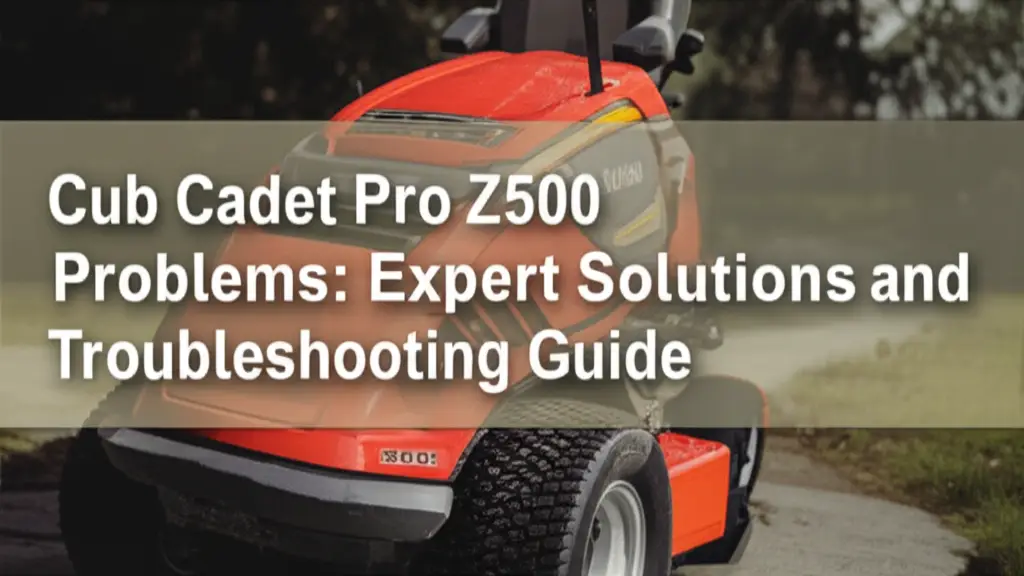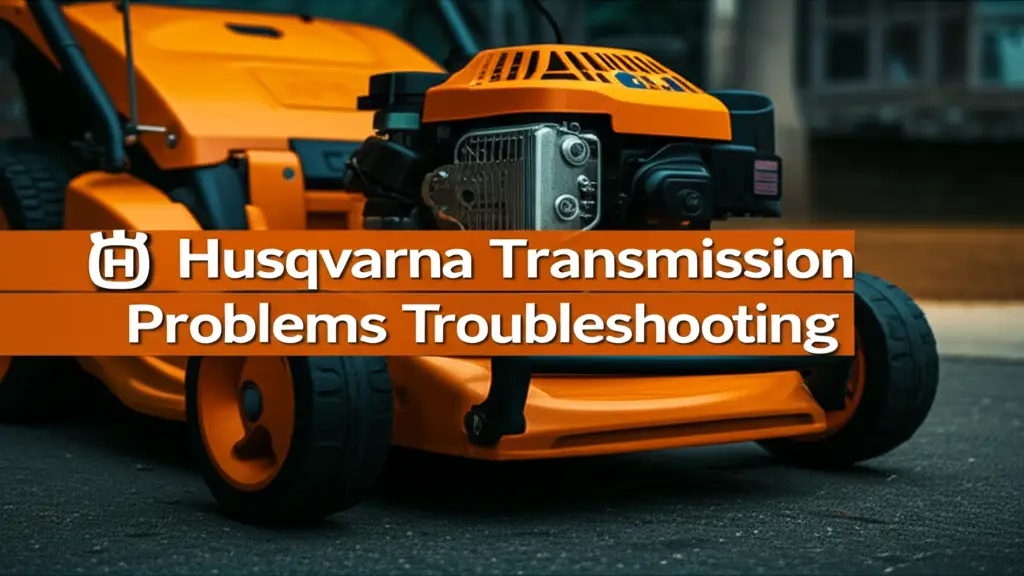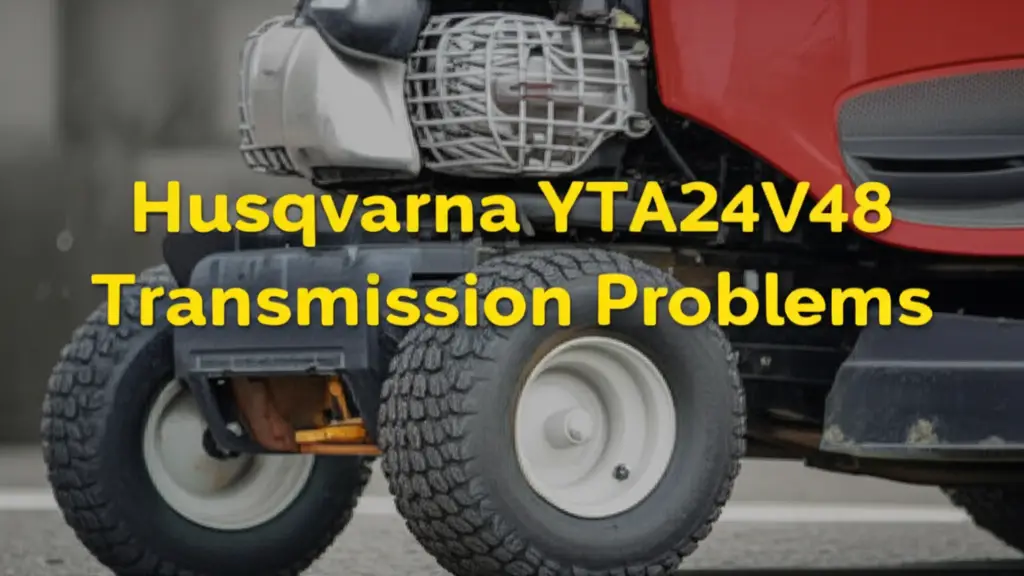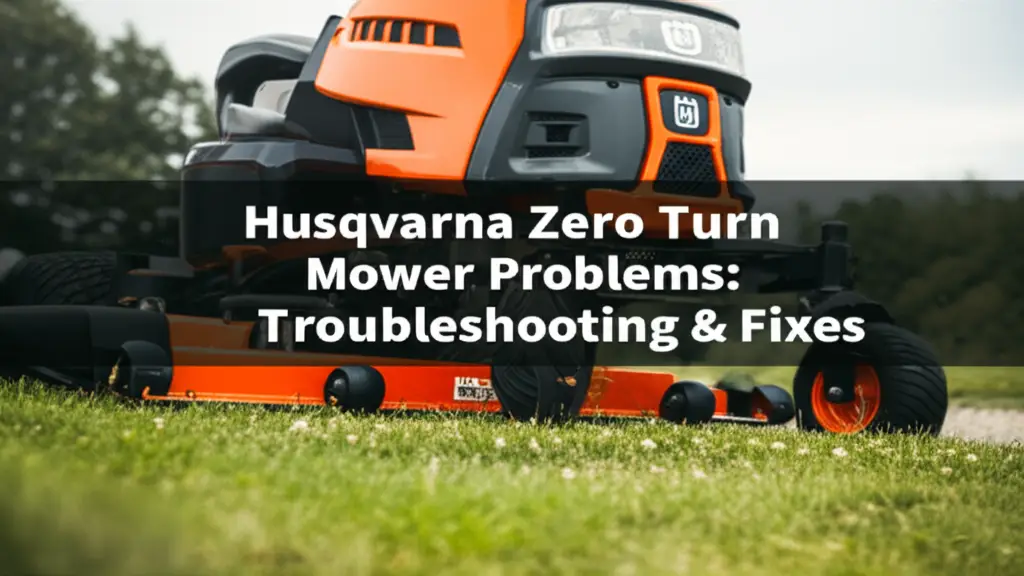· Stuart Martin · Troubleshooting · 12 min read
4 Common Cub Cadet Pro Z500 Problems Solutions

Cub Cadet Pro Z500 Problems: Expert Solutions and Troubleshooting Guide
Are you facing issues with your Cub Cadet Pro Z500 zero-turn mower? When performance problems arise with these professional-grade machines, it can lead to significant downtime and frustration. The Cub Cadet Pro Z500 series, while robust and powerful, can experience certain operational challenges that require proper diagnosis and effective solutions. In this comprehensive guide, we’ll explore common Cub Cadet Pro Z500 problems and provide expert troubleshooting tips to keep your commercial mower running at peak performance.
Key Takeaways:
- Most Cub Cadet Pro Z500 issues stem from engine performance, electrical systems, hydraulic transmission, or cutting deck problems
- Regular maintenance prevents many common problems from developing
- Proper diagnosis is essential before attempting repairs
- Many issues can be resolved with basic tools and techniques
- Professional service may be required for complex hydraulic and electrical repairs
The Cub Cadet Pro Z500 is a professional-grade zero-turn mower designed for commercial use, but like any complex machine, it can develop issues ranging from starting problems to transmission failures that impact performance and productivity.
Common Engine Problems and Solutions
The heart of any Cub Cadet Pro Z500 is its powerful engine, typically a Kawasaki FX or Kohler Command Pro. When engine problems occur, they can completely sideline your mowing operations. Understanding these issues can help you get back to work faster.
Starting Issues
One of the most common complaints with the Pro Z500 series involves difficulty starting the engine. This frustrating problem can stem from several sources:
Fuel System Issues: Stale or contaminated fuel is a primary culprit. If your mower has been sitting unused for months, the fuel may have degraded. Drain the old fuel, clean the tank, and refill with fresh gasoline.
Faulty Spark Plugs: Worn or fouled spark plugs prevent proper ignition. Remove the spark plugs, inspect them for carbon buildup or damage, and either clean or replace them as needed.
Dead Battery: A weak or dead battery is often overlooked. Test the battery voltage with a multimeter – it should read at least 12.6 volts. Clean any corrosion from the terminals and ensure proper connections.
Clogged Air Filter: A dirty air filter restricts airflow to the engine. Remove and inspect the filter, replacing it if it’s clogged with debris or dirt.
Many starting issues can be resolved with basic maintenance procedures. However, if the problem persists after checking these components, the issue might be more complex, such as a faulty ignition switch or starter solenoid.
Performance Problems
Even when your Pro Z500 starts, you might notice a decline in engine performance, which can manifest as:
Power Loss: If your mower lacks its usual power, especially when tackling tall grass, check the air filter and fuel filter for clogging. Also inspect the fuel lines for restrictions.
Rough Running or Surging: An engine that runs unevenly or constantly changes speed likely has carburetor issues. Clean the carburetor thoroughly or consider a rebuild kit if necessary.
Excessive Smoke: Blue smoke indicates oil burning, while black smoke suggests a rich fuel mixture. Check oil levels and the carburetor adjustment if you notice smoke.
Overheating: Engine overheating can damage internal components. Ensure cooling fins are clean and free of debris. Check oil levels and quality, as low or degraded oil increases friction and heat.
Regular engine maintenance according to the manufacturer’s schedule can prevent many of these issues. This includes oil changes every 50-100 operating hours, air filter replacement, and fuel system maintenance.
Electrical System Troubleshooting
Electrical problems can be particularly frustrating with the Cub Cadet Pro Z500 because they often seem intermittent or difficult to diagnose. Modern commercial mowers rely heavily on electrical systems for safety features, monitoring, and operation.
Safety Switch Malfunctions
The Pro Z500 series includes multiple safety switches that prevent operation under unsafe conditions. While these are crucial safety features, they can sometimes malfunction:
Seat Safety Switch: If the mower shuts off when going over bumps, the seat switch may be defective or misadjusted. Check the wiring connections and switch operation.
PTO Safety Switch: When your mower shuts off when engaging the blades, inspect the PTO safety circuit. The switch may need adjustment or replacement.
Brake Safety Switch: If the mower won’t start despite the brake being engaged, verify this switch is functioning correctly.
Many owners become frustrated with safety switches and consider bypassing them. This is dangerous and not recommended, as these switches prevent accidents and injuries.
Battery and Charging Issues
A healthy electrical system depends on a properly functioning battery and charging system:
Weak Battery: Signs include slow cranking, dim headlights, and intermittent electrical problems. Test battery voltage and replace if it’s below 12.4 volts or won’t hold a charge.
Charging Problems: If the battery continually drains, the charging system may be faulty. Check the voltage regulator and alternator output.
Corroded Connections: Corrosion at battery terminals or ground connections causes resistance and electrical problems. Clean all electrical connections and apply dielectric grease to prevent future corrosion.
Electrical problems often require systematic testing with a multimeter to identify the source. If you’re not comfortable with electrical diagnosis, consulting a professional may save time and frustration.
Hydraulic Transmission Problems
The Pro Z500’s hydrostatic transmission system provides smooth, variable speed control but can develop issues that affect performance and maneuverability. These complex systems require careful maintenance and proper operation.
Loss of Power or Drive
When your mower loses drive power or fails to move properly, several hydraulic issues may be responsible:
Low Hydraulic Fluid: Insufficient transmission fluid causes loss of power and poor response. Check fluid levels and top up with the manufacturer-recommended hydraulic oil.
Air in the System: Air bubbles in the hydraulic system cause jerky movement or loss of power. Proper bleeding of the system may be necessary to restore performance.
Worn Pump Components: Internal wear in the hydraulic pump reduces pressure and performance. This typically requires professional repair or replacement.
Drive Belt Issues: A loose, worn, or broken drive belt prevents power transfer to the transmission. Inspect belts for proper tension and condition, replacing as needed.
Regular transmission fluid changes (typically every 200-300 hours) help prevent many hydraulic issues. Using the correct fluid type is crucial – using the wrong hydraulic fluid can cause seal damage and system failure.
Steering and Control Problems
The Pro Z500’s zero-turn capability relies on precise hydraulic control:
Uneven Steering: If the mower pulls to one side or turns unevenly, check the tire pressure first. Uneven pressure causes tracking issues. If tire pressure is correct, the hydraulic system may need adjustment.
Stiff Controls: Difficult or stiff steering levers indicate potential hydraulic issues or mechanical binding. Check linkages for proper lubrication and adjustment.
Leaking Hydraulic Fluid: Any hydraulic leak should be addressed immediately. Leaks reduce system pressure and can lead to complete failure if not repaired. Look for wet spots or oil stains under the mower and around fittings.
Hydraulic systems in commercial mowers are sophisticated and often require specialized knowledge for proper repair. Don’t hesitate to consult a dealer service department for complex hydraulic issues.
Cutting Deck and Blade Problems
The cutting system is where the Pro Z500 delivers its value, and problems here directly affect cut quality and productivity. Proper deck maintenance is essential for professional results.
Uneven Cutting
An uneven cut creates a poor appearance and reflects badly on your work:
Deck Leveling Issues: An improperly leveled deck causes uneven cutting heights. Use the manufacturer’s leveling procedure to ensure the deck is perfectly adjusted.
Bent or Damaged Blades: Impact with rocks or debris can bend mower blades. Inspect blades for damage and replace any that show bending or excessive wear.
Spindle Problems: Worn or damaged spindle bearings cause vibration and uneven cutting. Check for play in the spindles and replace bearings if necessary.
Tire Pressure Differences: Uneven tire pressure affects the mower’s stance and cut quality. Maintain equal pressure in all tires according to specifications.
Always check deck level after transporting the mower or hitting obstacles, as these events can throw off the careful adjustment needed for a perfect cut.
Blade Engagement Problems
Issues with the PTO (Power Take-Off) system affect blade operation:
Blades Won’t Engage: If the cutting blades won’t start when the PTO is activated, check the electric PTO clutch, related fuses, and wiring connections.
Blade Stops Under Load: When blades stop in heavy grass, check for belt slippage, a weak PTO clutch, or engine power issues.
Unusual Noises During Operation: Grinding, squealing, or knocking sounds from the deck area indicate mechanical problems that require immediate attention to prevent further damage.
Regular deck cleaning prevents buildup of grass and debris that can cause uneven cutting and increased wear on components. A clean deck also extends belt life and improves discharge efficiency.
Maintenance Best Practices to Prevent Problems
The most effective way to deal with Cub Cadet Pro Z500 problems is to prevent them through proper maintenance. Commercial mowers operate under demanding conditions and require consistent care to deliver reliable performance.
Regular Maintenance Schedule
Following a strict maintenance schedule saves money and downtime:
Daily Checks: Before each use, inspect fluid levels, tire pressure, and check for loose or damaged parts.
Weekly Maintenance: Clean the mower thoroughly, especially the deck underside and cooling fins. Check belt condition and tension.
Monthly Tasks: Grease all fittings, check battery condition, and inspect electrical connections.
Seasonal Service: Change oils and filters, sharpen or replace blades, and perform a comprehensive inspection of all systems.
Keep detailed maintenance records to track service history and identify recurring issues that might indicate deeper problems.
Professional Service Considerations
While many maintenance tasks can be performed by the owner, certain situations call for professional service:
Complex Hydraulic Repairs: Transmission rebuilds and major hydraulic system repairs require specialized knowledge and tools.
Electrical Diagnostics: Intermittent electrical problems often need professional diagnostic equipment to trace.
Warranty Work: Having dealer service perform warranty repairs ensures proper documentation and parts.
Annual Inspections: A professional inspection once yearly can identify potential problems before they cause failures.
Building a relationship with your local Cub Cadet dealer’s service department provides access to factory-trained technicians familiar with the Pro Z500 series’ specific needs.
Winterization and Storage
Proper storage procedures prevent many problems that appear at the start of the mowing season:
Fuel System Preparation: Either drain the fuel system completely or add fuel stabilizer to prevent carburetor issues during storage.
Battery Maintenance: Remove the battery or connect a maintenance charger to keep it charged during the off-season.
Corrosion Prevention: Apply light oil to exposed metal parts to prevent rust during storage.
Covered Storage: Keep your mower in a dry, covered location to prevent weather damage and UV deterioration of components.
Following proper winterization procedures can eliminate many starting problems and extend the life of your investment.
FAQ: Cub Cadet Pro Z500 Common Questions
Is Cub Cadet zero-turn a good brand?
Cub Cadet zero-turn mowers, including the Pro Z500 series, are well-regarded in the commercial landscaping industry for their durability, cutting performance, and operator comfort. While they may require slightly more maintenance than some competitors, their build quality and parts availability make them a reliable choice for professional applications.
Why does my Cub Cadet stop running when I’m mowing?
Several issues can cause your Cub Cadet Pro Z500 to shut down during operation: overheating due to blocked cooling fins, safety switch activation (particularly the seat switch), fuel delivery problems, or electrical issues. Start by checking the simplest causes—ensure you’re properly seated, check for overheating, and verify fuel flow to the engine.
Why did Cub Cadet stop using Kawasaki engines?
Cub Cadet has diversified their engine suppliers over the years to include Kohler, Kawasaki, and their own branded engines. This strategic decision helps manage supply chain considerations, cost factors, and performance requirements across their product line. Some Pro Z500 models still feature Kawasaki engines, while others use Kohler Command Pro engines.
Why does my Cub Cadet zero-turn shut off when I engage the blades?
This common problem usually relates to the PTO safety circuit. When you engage the blades, the electrical load increases significantly. If the battery is weak or there’s a loose connection, the system may not handle this increased demand. Check battery voltage, clean all electrical connections, and inspect the PTO clutch for proper operation.
How long should a commercial zero-turn mower like the Pro Z500 last?
With proper maintenance, a Cub Cadet Pro Z500 should provide 2,000-3,000 hours of service life. Many commercial operators report exceeding these numbers with rigorous maintenance schedules. The key factors affecting longevity include operating conditions, maintenance frequency, and whether problems are addressed promptly before they cause secondary damage.
What’s the best way to maintain the hydrostatic transmission in my Pro Z500?
Maintain your Pro Z500’s hydrostatic transmission by checking fluid levels regularly, changing transmission fluid according to the maintenance schedule (typically every 200-300 hours), keeping the cooling fins clean, and avoiding rapid directional changes that stress the system. Always use the manufacturer-recommended hydraulic fluid to prevent seal damage.
Are aftermarket parts safe to use on my Cub Cadet Pro Z500?
Quality aftermarket parts can be cost-effective alternatives for certain components like filters, belts, and blades. However, for critical systems like hydraulics and electrical components, OEM (Original Equipment Manufacturer) parts often provide better reliability and fitment. Using non-OEM parts for warranty repairs may also void remaining warranty coverage.
Final Thoughts
The Cub Cadet Pro Z500 represents a significant investment for commercial operators and demanding homeowners alike. Understanding common Cub Cadet Pro Z500 problems and their solutions helps protect this investment and ensures maximum productivity. Most issues can be prevented through diligent maintenance and addressed early before they escalate into major repairs.
Remember that troubleshooting should follow a logical process: identify symptoms, check the simplest potential causes first, and work systematically toward more complex possibilities. Having the right tools, maintenance supplies, and access to quality parts makes this process more efficient and effective.
For commercial operators, establishing a relationship with an authorized service center complements your own maintenance efforts. Their expertise with the Pro Z500 series can be invaluable for diagnosing intermittent issues or performing complex repairs beyond typical maintenance procedures.
By following the guidance in this troubleshooting guide, you’ll be well-equipped to keep your Cub Cadet Pro Z500 performing at its best for many seasons of reliable service.
Experiencing problems with other Cub Cadet models? Check out our guide to Cub Cadet Pro Z100 problems for additional troubleshooting help.
Learn more about common transmission issues across different mower models to better understand your equipment.
Discover solutions for Cub Cadet zero-turn carburetor problems that may affect your mower’s performance.
Having starting issues with your zero-turn? Our guide on zero-turn starting problems provides comprehensive solutions.
Explore our detailed analysis of hydrostatic transmission problems to maintain optimal performance.
- Cub Cadet Pro Z500
- Zero Turn Mower
- Lawn Mower Repair





